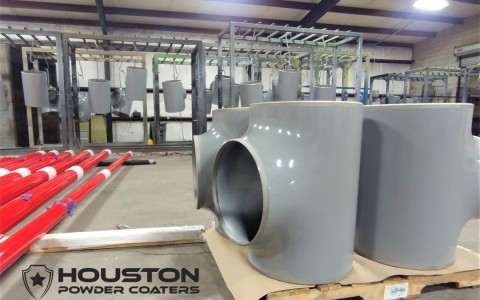Across many industries and applications, there is a common need for finishing processes that can offer effective and efficient protection for metal surfaces. Whether it’s pipeline for the oil and gas industry or traffic signs in urban development, metals are ever-present in our daily lives, and they need to be protected from damage from a variety of sources. Traditional wet paint can be used to coat metal surfaces and afford some protection, but there are more effective coating technologies—powder coating being first and foremost amongst them.
Powder coating in Houston offers several advantages over wet paint application. One of the clearest advantages with powder coating is the thick, hard finish that is produced by a process of electrostatic binding and high-heat curing. The thickness of the coat, and its durability and resistance to factors such as abrasion and rust, is unattainable with traditional wet paint coatings. Plus, wet paint coatings will require maintenance down the road, with further coats necessary to preserve the coat’s protective qualities; powder coating is a more permanent solution, offering a denser and harder finish with fewer coats overall.
Powder coating doesn’t just offer protective benefits, but in several ways it can also offer a more attractive finish. Powder coat colors and textures are offered in a wide variety of choices to the consumer, with the RAL system providing standardized colors throughout the industry. Powder coating in Houston also offers a more even coating since the powder is applied uniformly without the drips or application traces that might be seen with wet paint. Plus, the application and curing process in powder coating is significantly faster than allowing a coating of wet paint to dry, and powder coating is environmentally friendly—the powder contains no solvents and produces a low amount of volatile organic compounds (VOCs).














